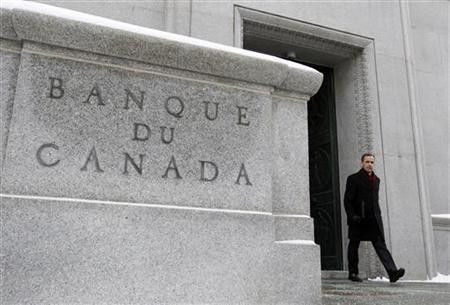Bank of Canada holds rates, sees faster recovery

The Bank of Canada held its key policy rate at 1 percent on Tuesday, but forecast a faster Canadian recovery than expected despite an increasingly worrying outlook for the global economy.
Governor Mark Carney has held the central bank's rate unchanged for 16 months, the longest period without a rate change since the bank began targeting the overnight rate in 1994. A below-inflation 1 percent rate is providing considerable stimulus to the domestic economy, it says.
For the Bank of Canada, 2011 was the year of 'copy and paste' when setting the overnight rate. This theme is expected to prevail throughout 2012, said David Tulk at TD Securities.
The bank said its overall Canadian economic outlook was little changed from October. But a stronger-than-expected second half of 2011 meant the economy should reach full capacity and inflation should return to its 2 percent target by the third quarter of 2013, one quarter sooner than previously forecast.
Inflation was 2.9 percent in November, the last month for which figures are available, and is forecast to ease to 2.8 percent in December.
The bank raised its projections for 2011 economic growth to 2.4 percent from 2.1 percent and for 2012 to 2 percent from 1.9 percent. Its estimate for 2013 was 2.8 percent, slightly lower than originally forecast.
But there is little sign that the bank is worried about a speedier return to full capacity. In its July Monetary Policy Report, the central bank said economic headwinds meant the policy rate could deviate from its long-run level even if inflation is at target and output is at potential.
Economists and strategists in a Reuters poll had predicted no rate change on Tuesday and expect the bank to stay on the sidelines for at least another year.
There was nothing here for those looking for a rate cut. At the same time there's really no indication that they're going to be considering hiking rates for many, many months, said Doug Porter, deputy chief economist at BMO Capital Markets.
While most economists have expected that the next move will be up - a change they forecast for the first quarter of 2013 - overnight index swaps, which are based on expectations for the overnight rate, point to lower rates.
Denis Senecal, head of fixed income and cash at State Street Global Advisors, said 2 percent growth would still be relatively strong considering that exports will not contribute to growth and there will not be any fiscal stimulus.
It's not a great year, it won't be part of the vintage of the last 20 years, but it's still pretty strong considering the fact that we're not coming from slow growth, we're coming from healthy growth. So it's a transition year and the only negatives are coming from outside Canada right now, he said.
Europe is in worse shape than expected in October, but the bank said it assumed that the authorities there will take sufficient steps to contain the crisis.
On the other hand, the United States turned in a stronger performance in the second half of 2011 and the U.S. recovery will proceed at a more modest pace going forward.
There's a recognition here that our trading partner is doing better, but yes, the European sovereign debt crisis remains a threat to the global economy. But all in all the recent developments show that Mr. Carney is comfortable with his current...stance, said National Bank Financial chief economist Stefane Marion.
Shortly after the announcement, the Canadian dollar firmed to C$1.0121 to the U.S. dollar, or 98.80 U.S. cents, from about C$1.0131 just before the statement. It weakened to C$1.0132 by 12:10 a.m. EST (1710 GMT).
© Copyright Thomson Reuters 2024. All rights reserved.





















